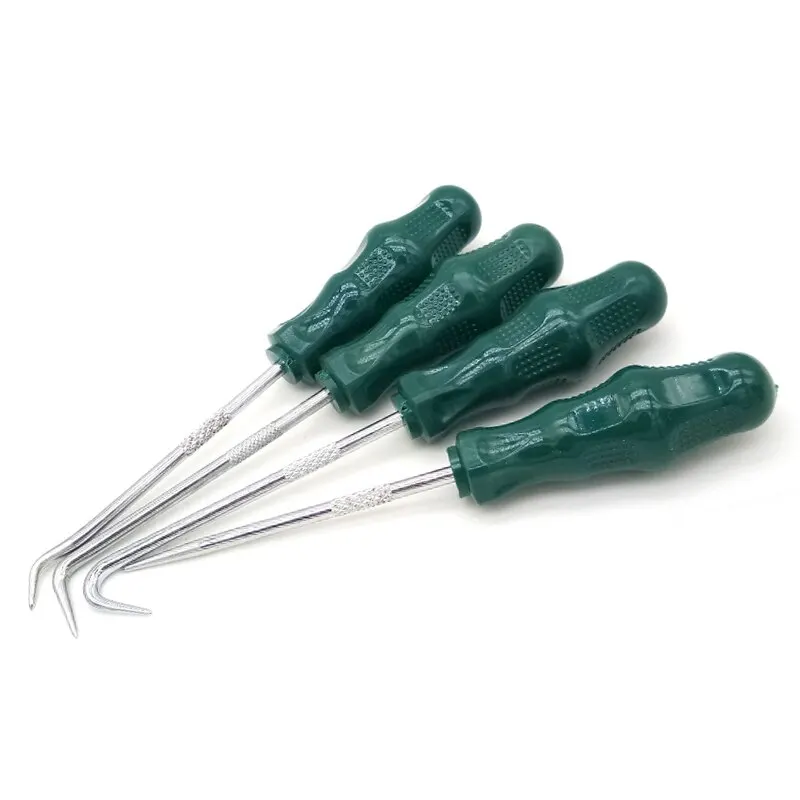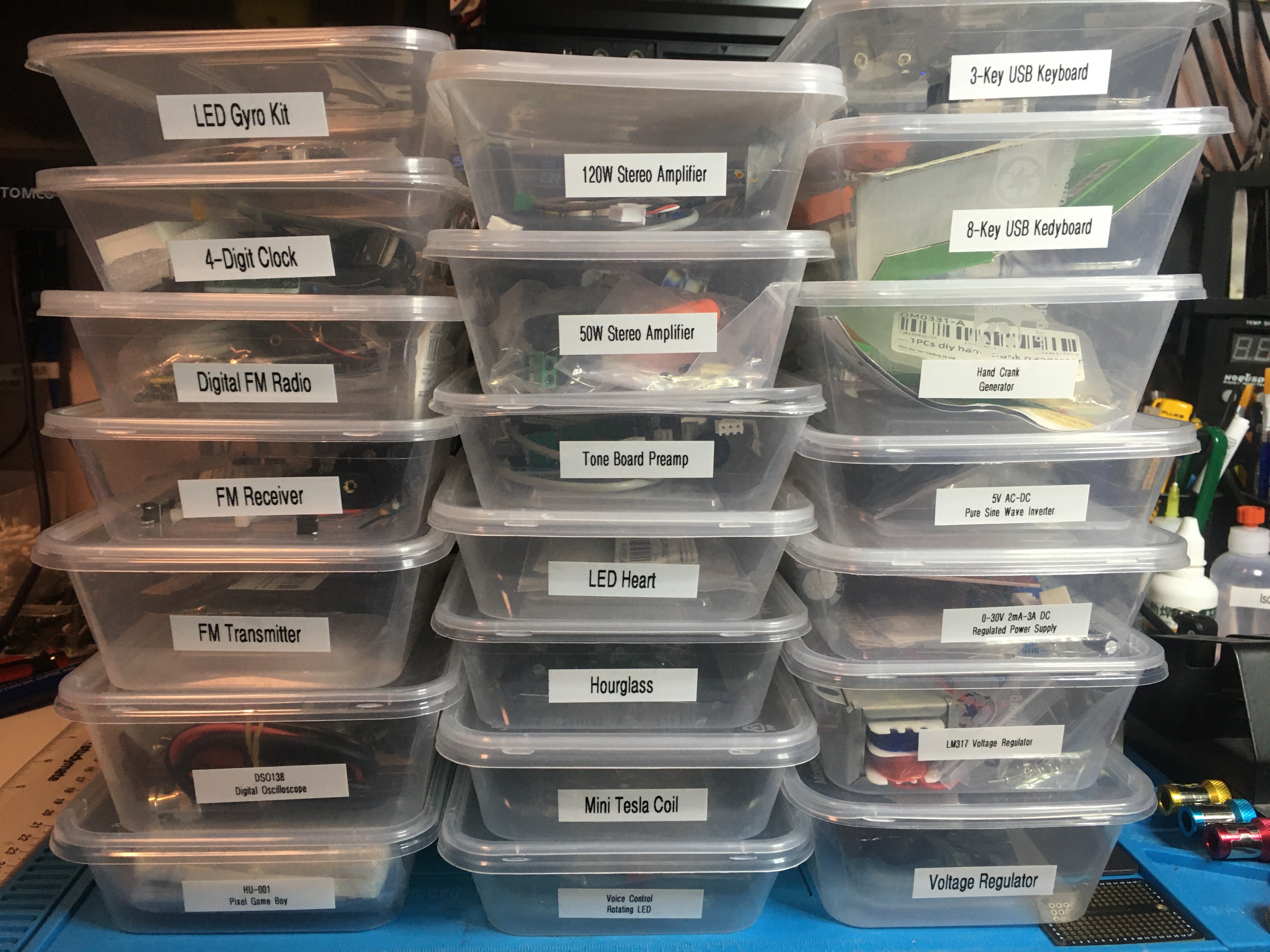In Build – gusmanb’s 24 Channel 100MHz Logic Analyser from Happy Little Diodes I learned about this Logic Analyzer project. I would like to try building one of these for myself one day too.
Mail Call #9: Tools and Equipment from Jaycar, Amazon, and AliExpress | In The Lab With Jay Jay
This post is part of my video blog and you can find more information about this video over here.
You can support this channel on Patreon: patreon.com/JohnElliotV
In this video I go through what arrived in the mail recently.
- Duinotech Arduino Compatible 8 x 5 RGB LED Matrix Shield
- Usb Embedded Hosts: The Developer’s Guide
- SERIAL PORT COMPLETE SECOND EDN: COM Ports, USB Virtual COM Ports, and Ports for Embedded Systems
- USB Mass Storage: Designing and Programming Devices and Embedded Hosts
- Rossler Soho 4 Drawer Filing Storage Box – Black
- PD100W USB 3.2 20Gbps ThunderBolt 3 Type C to Type C Cable 8K@60Hz USB-C Cable Cord For iPhone 15 Pro Max MacBook Samsung 2/3m (1m, 1.5m, 3m)
- 40gbps Pd 100w usb c winkel 90 grad adapter thunderbolt 3 4 usb4 typ c Männlich/Weibliche auf buchse konverter 8k @ 60hz (CF-CF-40GB-ST)
- 1-10pcs/ Leonardo R3 Development Board With 30cm USB Cable ATMEGA32U4 For Arduino (Leonardo R3 10pcs)
- 10PCS MEGA2560 MEGA 2560 R3 ATmega2560-16AU CH340G AVR USB Board Development Board MEGA2560 for Arduino (Square port interfac)
- Wowstick wowpad Magnetic Screwpad Screw Postion Memory Plate Mat For kit 1FS Electric 1P+ 1F+ Plus magnetic sticker
- CD4017 Colorful Voice Control Rotating LED Light Kit Electronic Manufacturing DIY Kit Spare Parts Student Laboratory
- ANENG BT189 Button Cell Battery Tester 9V N D C AA AAA Universal Household LCD Display Battery Tester Power Bank Detectors Tools (Color: BT189 Black(box))
- 1X 8 Ohm 8R 0.5W Mini Ultra-thin Horn Speaker Diameter 20mm 23mm 28mm 30mm 36mm 40mm 50mm 57mm Loudspeaker W/ P2.0 Termina Wire (20mm, 30mm, 40mm) [I believe these have JST XH2.0 connections]
- 1.3″ OLED Display Module White/Blue Color Drive Chip SH1106 128X64 1.3 inch OLED LCD LED IIC I2C Communicate For Arduino (white, blue)
- I2C OLED Display Module 0.91 Inch I2C SSD1306 OLED Display Module White / BLUE I2C OLED Screen Driver DC 3.3V~5V for Arduino (white, blue)
- 88-108MHz DIY Kit FM Radio Transmitter and Receiver Module Frequency Modulation Stereo Receiving PCB Circuit Board (FM Transmitter Kit, FM Receiver Kit)
- 5V DC-AC Pure Sine Wave Inverter SPWM Driver Board EGS002 12Mhz Crystal Oscillator EG8010 + IR2113 Driving Module LCD
- Diy Electronic Kit LED Gyro DIY Welding Kit Rotating Lantern Inline Components Diy Electronic Sodering Project(without Battery)
- AHT10 High Precision Digital Temperature and Humidity Sensor Measurement Module I2C Communication Replace DHT11 SHT20 AM2302
- 10PCS WH148 B1K B10K B50K B100K B1M 3Pin Linear Potentiometer 15mm Shaft With Nuts And Washers (50K Ohm)
- Cleqee P1532 10pcs Dupont Male to Stackable Banana Plug Silicone Jumper Cable 26AWG Wire For Breadboard Electronic DIY
- 120PCS 6 Color Tin-Plated Breadboard PCB Solder Cable 24AWG / 26AWG Jumper Wire DIY Kit High-Quality Electronic Wires (24AWG-120pcs)
- 1PCS Double Ended High Voltage Power Test Connecting Wire 4mm Banana Plug Test Wire Silicone 1M Banana Jack for Instrument (Red, Black)
- TZT USB Host Shield 2.0 for Arduino UNO MEGA ADK Compatible for Android ADK DIY Electronic Module Board
- SX DT3 Data Cable Detection Board Type-C Micro USB C Cable Tester Short Circuit On Off Switching Diagnose Tool for iOS Android
- New 3.5-inch TFT Color Screen LCD Display Module 320X480 with High-Definition Support for Direct Insertion into Mega2560
- Voltage Regulator Module, Constant Voltage and Current LCD Digital Display, Voltmeter, Ammeter, Adjustable Step-down and Step-up
- 5V Electronic Hourglass DIY Kit Funny Electric Production Kits Precise With LED Lamps Double Layer PCB Board 84*40mm
- BD243 Mini Tesla Coil Kit Magic Props DIY Parts Empty Lights Technology Diy Electronics BD243C
- 1-10PCS/ high quality UNO R3 (CH340G) MEGA328P for Arduino UNO R3 + USB CABLE ATMEGA328P-AU Development board 16Mhz TYPE-C (UNO R3 10PCS)
- 1PC 2.0mm 3.5mm 1.5M Welding Wires Desoldering Braid Solder Remover Wick Wire Repair Tool (3mm 3m)
- DC Electric Wire 5m/10m 2 Pin Single Strip Extension Cable 24AWG Antiflaming Cord Connector For Low Power LED Small Sppliance 3C (3x 5m; 2x 10m)
- 15Pcs/Set Sandpaper 400 600 3000 800 1000 1200 1500 2000 2500 Grit Sand Paper Water/Dry Sanding Paper Abrasive Tools
- Stainless Steel String Ruler String Action Gauge Ruler for Guitar Bass Silver
- (10pcs)100% New IRFZ44N IRFZ44 Power MOSFET TO-220 Transistors (IRFZ44N)
- 1 Pack Static IC Puller – Efficient Mechanical Keyboard Switch Remover Tool with Anti-Static Protection – Easy to Use, Durable,
- 1/3/5m Nano Tape Double-Sided Adhesive Tape Traceless Waterproof Tape For Bathroom Kitchen Sink Tap Gel Sticker (5m, 1mm, 20mm)
- High Temperature Resistance Aluminum Foil Tape Kitchen Pipe Repair Tape Adhesive Sealing Foil Heat Insulation Leak Proof Tape (3cm, 20m, silvery)
- 2pcs/set 2.8mm Carpenter Mechanical Pencil with Sharpener for Woodworking Construction Long Head Carpenter Pencil Stationery (Black set- B)
- Damaged Screw Extractor Broken Bolt Stripped Set Double Head Tool Easy Out Removal Disassemble Stud Slip Teeth Demolish Remover (Screw Extractor B)
- 50PCS/Box LM358P LM393P NE555P DIP Integrated Circuits electronic kit LM358 LM393 NE555 (LM358P, LM393P, NE555P)
- 10-Pcs Square Snap Safety Hooks: Sturdy Anti-Drop Hanging with Buckles for Bonsai (Color: 10pcs)
- Universal 1 PCS Magnetic Ring Alloy Magnetic Ring Screwdriver Bits Anti-corrosion Strong Magnetizer Drill Bit Magnetic Ring (3pcs Colorful)
- Original Chip TPA3116 D2 XH-M543 12V 24V 120W*2 Dual Channel Digital Power Audio Amplifier Board 120W X2 TPA3116D2 (Color: TPA3116 Amplifier)
- 9 In 1 Air Quality Monitor CO2 Meter CO TVOC HCHO PM2.5 PM1.0 PM10 Temperature And Humidity Measurement Carbon Dioxide Detector (Color: 9 in 1)
- Lead-free Tin Silver Copper SAC305 Solder Sheet Solder Tape Solder Foil Sn96.5Ag3.0Cu0.5 Solder Tape (Type 5: 50*0.3mm/meter)
- Plush Microfiber Tire Rim Wheel Hub Cleaning Brush Car Beauty Car Wash Brush Maintenance Tools Cleaning Supplies (Color: BLUE)
- Waveshare 2.8inch TFT Touch Shield LCD Resistive touch screen 320*240 resolution compatible with Arduino/Leonardo/NUCLEO
- YS-AP50L 50W+50W Mini Digital Stereo Amplifier 50WX2 Speaker Power Amplifier Board Module Bluetooth-compatible 5.0 (Color: YS-AP50L)
- 2.4 Inch LCD Screen Retro Video Game Console Built-in 400 In Handheld Portable Pocket Mini Game Console Christmas Gift Christmas (Color: Red)
Thanks very much for watching! And please remember to hit like and subscribe! :)
Following is a product I use picked at random from my collection which may appear in my videos. Clicking through on this to find and click on the green affiliate links before purchasing from eBay or AliExpress is a great way to support the channel at no cost to you. Thanks!
Yum Cha Multifunction Hook Tools |
Let’s go shopping!
OpenAI Announced GPT-5
Apparently GPT-5 will ship this year: BREAKING!! OpenAI **JUST** Announced GPT-5 [100X BIGGER].
Electronics projects
I have organized the various electronics projects which will be coming up on @InTheLabWithJayJay.
Euler’s identity
I was talking to my friends about Euler’s identity and I was reminded of this one: The most beautiful equation in math, explained visually [Euler’s Formula].
In that context one of my friends brought Tau Day to my attention.
Demo #1: How to Use All the Features of the Fluke 17B+ Digital Multimeter | In The Lab With Jay Jay
This post is part of my video blog and you can find more information about this video over here.
You can support this channel on Patreon: patreon.com/JohnElliotV
In this video I take a look at how to use all of the features of my new Fluke 17B+ Digital Multimeter.
This is the inaugural demo video. We now do an ‘unboxing’ and a ‘demo’ separately. In the demo videos we try to take a close look at each feature of a product. Whereas with the unboxing we just make a record of the unboxing experience and take a cursory look at a few features.
If you’re interested in the Fluke 17B+ then in addition to watching this demonstration video you might also like to see the unboxing: Unboxing #14: Unboxing of Fluke 17B+ Multimeter | Learning Electronics In The Lab With Jay Jay.
The slides for this video are here: https://www.jj5.net/fluke-17b-plus/
In the video we cover:
- high current fuse test
- low current fuse test
- AC voltage measurement
- DC voltage measurement
- DC millivolts measurement
- AC current measurement
- DC current measurement (including milliamps and microamps)
- continuity testing
- diode testing (with forward bias measurement)
- resistance measurement
- capacitance measurement
- temperature measurement
- frequency measurement (10 Hz to 400 kHz)
- duty cycle measurement (of regular sine wave)
- relative measurement feature
- measurement hold feature
- backlight usage
- min/max measurement
We were lead astray by the slide for the current test which indicates the wrong terminal for the current measurement! I got these slides from Fluke in the 15B/17B/18B | Quick reference guide on the Manuals+resources tab on their documentation for the Fluke 17B+ Digital Multimeter. So it is pretty disappointing that the official Fluke documentation led me astray like that! But we figured it out in the end so all is well that ends well.
Errata: at around the 24 minute mark I try to introduce a load across my 9 V AC input voltage but I don’t correctly wire it in. So when I think I’m testing with a load attached there is in fact no load attached.
Thanks very much for watching! And please remember to hit like and subscribe! :)
Following is a product I use picked at random from my collection which may appear in my videos. Clicking through on this to find and click on the green affiliate links before purchasing from eBay or AliExpress is a great way to support the channel at no cost to you. Thanks!
Yum Cha Long Handle Wire Brush notes notes |
Let’s go shopping!
100MHz Logic Analyser
Today I watched Build – gusmanb’s 24 Channel 100MHz Logic Analyser by Happy Little Diodes which is about how to make your own 100MHz Logic Analyser for cheap.
Electronics Project #8: Debugging the Symbol Keyboard Mini Project JMP001 | In The Lab With Jay Jay
This post is part of my video blog and you can find more information about this video over here.
You can support this channel on Patreon: patreon.com/JohnElliotV
Silly Job Title: Component Wrangler
In this video I add improved debouncing logic to the inaugural Silicon Chip and Jaycar Mini Project: JMP001.
Shout out and thank you to Tim Blythman for developing this project.
You can see Tim’s original code and my updates which improve the debouncing implementation.
In the video I mention that we use the pgmspace.h header from Arduino.
Thanks very much for watching! And please remember to hit like and subscribe! :)
Following is a product I use picked at random from my collection which may appear in my videos. Clicking through on this to find and click on the green affiliate links before purchasing from eBay or AliExpress is a great way to support the channel at no cost to you. Thanks!
Maxitronix 500 In 1 (500in1) Electronics Project Lab Kit notes notes |
Let’s go shopping!
Jan Axelson on USB (and Serial)
This week I discovered Jan Axelson. She’s a tech writer and her website is here: http://janaxelson.com/.
I have ordered four of her books:
Mail Call #8: Books from Amazon, RCDs from Bunnings, and Kits from AliExpress! | In The Lab
This post is part of my video blog and you can find more information about this video over here.
You can support this channel on Patreon: patreon.com/JohnElliotV
In this video I get the following stuff:
- Timer, Op Amp, and Optoelectronic Circuits & Projects
- Electronic Sensor Circuits & Projects
- Electronic Formulas, Symbols & Circuits
- Getting Started in Electronics
- Arlec Single Outlet Safety Switch
- DIY Game Kit Retro Classic Electronic Soldering Welding Training Set Snake Plane Racing with Acrylic Case Mini Game Console
- 200pcs Radial Capacitors Set 15Values 10V 16V 25V 50V 0.1uF-220uF Electrolytic Capacitor Assortment Kit 0.22uf 2.2uf 100uf
- 200pcs/lot Electrolytic Capacitor Assortment Kit – 15 Values (10V, 16V, 25V, 50V) 0.1uF-220uF – Includes 0.22uF, 2.2uF, 100uF
- 5in1 CO2 Meter Digital Multifunctional Temperature Humidity Tester Carbon Dioxide TVOC HCHO Detector Air Quality Monitor
- 88-108MHz DIY Kit FM Radio Transmitter and Receiver Module Frequency Modulation Stereo Receiving PCB Circuit Board
- 30sets WH148 Potentiometer Assortment Kit Variable Resistors With Nuts And Washers 1k 10k 50k 500k 1M
- 2.54mm Dupont Line 20cm 40Pin Male to Male+Female to Male + Female to Female Jumper Wire Dupont Cable DIY
- Macropad Macro Mechanical Keyboard RGB Mini Gaming Custom Programming Knob Keypads Red Switch 3 Keys For Photoshop
- TJ-56-428 4-Digit Digital DIY Clock Kits with Acrylic Shell, DIY Alarm Clock Soldering Practice Kit for Learning Electronics
- DIY FM Radio Electronic Kit Adjustable Frequency 87-108MHz Digital Display Soldering Project Practice Solder RDA5807S
- 50PCS AMS1117 3V3 AMS1117-3.3 SOT223 Voltage Rugulator
- 0-30V 2mA-3A DC Regulated Power Supply DIY Kit Continuously Adjustable Current Limiting Protection Voltage Regulator Set
- 120PCS High-Quality Electronic Wire 24AWG 26AWG Tinned Wire 6 Color Jumper DIY Kit, for PCB and Breadboard Cable Wires
- 20×4 2004 LCD Display Module with IIC/I2C Serial Interface Adapter IIC I2C TWI Serial 2004 20×4 LCD Module Shield for Arduino R3
- DIY Kit LM317 Adjustable Regulated Voltage 110V 220V to 1.25V-12.5V Step-down Power Supply Module PCB Board Electronic kits
- 8 Key Macro Programmable Fully Hot Swappable Mechanical Switch 4 Color RGB Light Gaming Mini Keyboard
- 1Pcs Funny Science Physical Experiment Small Invention Education Toys DIY Hand Crank Generator Model Children Learning Toy
- XH-A901 NE5532 Tone Board Preamp Pre-amp With Treble Bass Volume Adjustment Pre-amplifier Tone Controller For Amplifier Board
- 50PCS/Box LM358P LM393P NE555P DIP Integrated Circuits electronic kit LM358 LM393 NE555
In this video I use and mention my Jackcat Electric Scissors.
Also I managed to get my air-quality meter to work by squeezing it together with a clamp. It’s not pretty, but it works!
That red clamp you can see bottom left is holding the screen together and causing it to work…
Thanks very much for watching! And please remember to hit like and subscribe! :)
Following is a product I use picked at random from my collection which may appear in my videos. Clicking through on this to find and click on the green affiliate links before purchasing from eBay or AliExpress is a great way to support the channel at no cost to you. Thanks!
Yum Cha BM800 Condenser Microphone |
Let’s go shopping!


